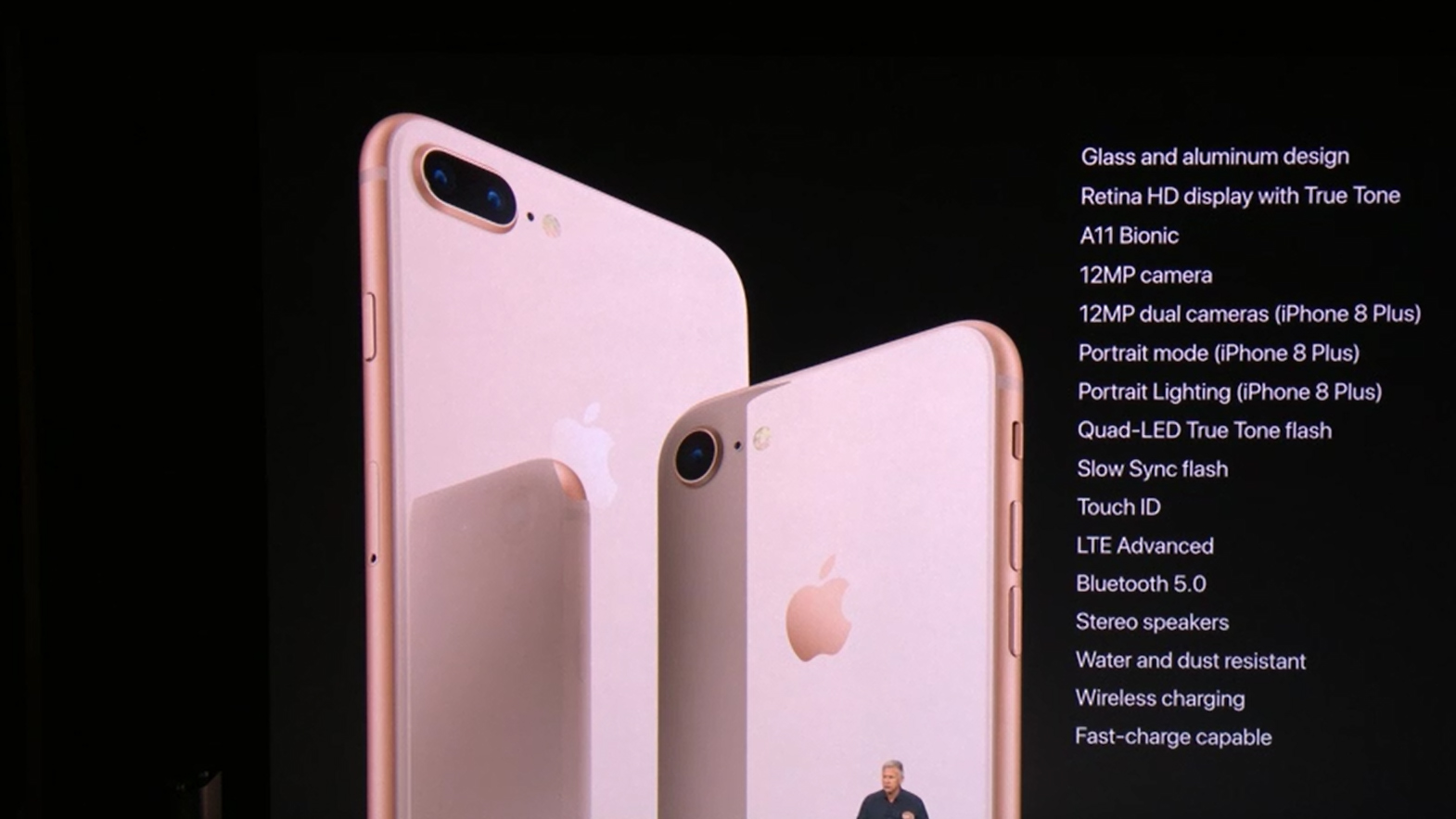7 reasons to upgrade to the iPhone 8/8 Plus (and a couple not to)
So you have an
iPhone 7 or iPhone 7 Plus and after yesterday's keynote you are unsure if
there's any reason to switch to the iPhone 8 or 8 Plus. Or maybe you're just
looking to find how much of an upgrade the new models are. Either way you've
come to the right place.

We went through all
differences between the new iPhone 8 Plus and found 7 solid ones to justify an
upgrade over the 2016 to the 2017 iPhones.
Design
The iPhone 8 Plus has an all new glass back and
one new color option. Apple promises that its new Ion-strengthened glass is the
toughest yet on a phone.
Storage
The base storage of the iPhone 8 duo is now
double that of the iPhone 7 family - we are finally past the point where the
starting price got you storage that was borderline unusable on your main phone.
Wireless charging
The iPhone 8 Plus has a glass back for a
reason - it supports the Qi wireless charging standard.
Fast charging
The iPhone 8 and iPhone 8 Plus also have fast
wired charging - up to 50% of charge in just 30 minutes. If you own an iPhone 7
Plus you know how tediously slow it charges.
Improved screen
Okay, the iPhone 8 Plus retained the display
size, resolution and display technology - LCD - but the screen is different.
It supports Dolby Vision and HDR10 and it's a True Tone display, meaning it
will read the ambient light and adjust the white balance accordingly - so
you'll never have too warm or too cool screen color output.
New camera
The camera resolution remained 12MP, the
iPhone 8 comes with new, larger sensor and a better, faster image signal
processor. All of this promises better focusing in low light, lower noise in
lower light, real-time image and motion analysis - body and face detection,
wide color capture, new frame rates for video - 4K at 60fps as well as slow
motion 1080p at 240fps.
Portrait mode on the Plus model has gotten
better. It now supports Portrait Lighting, which scans a scene and let's you
choose what type of light hits your subject - strong, soft, studio. And you can
adjust it after you've taken the shot too.
A11 Bionic chip
This is the biggest reason by far. The A11
Bionic should wipe the floor with the A10 Fusion. It's built on a new 10nm
process (as opposed to the 16nm of the A10 Fusion), it has more transistors,
more CPU cores (six vs four) and a new Apple-made GPU.
The A11 Bionic has 6 cores - 2
high-performance and 4 power-efficient ones. The A10 Fusion has 2 of each type.
The A10 Fusion chip can run either the 2 fast cores or the 2 slower ones, while
the A11 can run all six at the same time.
Apple promises 25% faster performance cores,
75% faster power efficient cores and 70% faster multi-threaded performance.
On the other hand the iPhone 8 Plus is 20g
heavier than the 7 Plus, while the 8 weighs 10g more than the 7. And that's
while having the exact same ample bezels as last year's models - actually those
haven't improved since the iPhone 6 and 6 Plus came in 2016.
A more important reason not to move to either
of the iPhone 8 versions however is the iPhone X - it just looks so sexy that
it makes the other two as coming from a previous era. If only it wasn't as
pricy as it was this would have been a much shorter story.
Source: gsmarena